Archive
Quartex Pascal: Dynamic JS structures
If you work closely with JavaScript, it’s important to be able to approach JS in way that is both familiar to Object Pascal developers, yet compatible with the underlying reality of JavaScript. We want to do as much as possible in Object Pascal, but in order to achieve that – we first need to learn how to properly integrate with JavaScript without loss of fidelity and performance.

Object Pascal is strictly typed and linear in execution, which has a lot of benefits for a traditional developer. But JavaScript is the exact opposite and thrives on untyped data and async execution. It is only recently that concepts such as classes have appeared in JavaScript, and they have little in common with traditional C/C++ or Pascal classes.
In order to make JavaScript’s ad-hoc data structures endurable from Object Pascal, we needed to introduce something new. And that is what anonymous classes is all about.
What on earth are anonymous classes?
In short, an anonymous class is essentially an object instance that is created “ad-hoc” where you define it. Please keep in mind that the class we are talking about here is not a pascal class type, but a JavaScript object instance. So in Delphi terms this is closer to a managed record than an object instance.
The syntax could not be simpler:

The above snippet will create a JavaScript object containing the field structure we have defined between the class and end keywords. The reason for this somewhat spartan approach is because JS expects these types of structures as parameters practically everywhere – and we wanted to keep things as short as possible. Having to pre-define a type would defeat the entire purpose, and a constructor call or new keyword would just get in the way.
You can omit defining datatypes for the fields (optional), as long as the data is compatible with whatever the DOM is expecting it will work just fine.
To show you how elegantly this solves integration -let’s deal with a real-life example, like the HTML element.animate() method.
Parameters simplified
Before we look at the code, keep in mind that all QTX widgets (visual controls) manages a underlying HTML element for the duration of it’s life-cycle. Meaning that the widget code will create, maintain and ultimately destroy the HTML element that visually represent it. Just like the VCL does for WinAPI controls.
The default element for TQTXWidget is the <DIV> element. Different widgets override this and create other browser element types. You can access the element directly via the Handle property, which is a direct reference to the element managed by the widget code. This is the exact same approach that the Delphi VCL uses, so it should be second nature to Delphi and Freepascal developers.
So when you want to work directly with the element, you can either just use the Handle directly, or typecast it to JElement for simplicity (all DOM types are prefixed with J in our RTL).
Since THandle derives from variant, you dont really need to typecast; you can just write the methodname directly, a bit like how you can call COM methods through a Delphi variant reference. In such a case you have to make sure the method or property is spelled correctly (JavaScript is case sensitive) and that the parameters match.
Both of these syntaxes can be used, just like COM:
- self.Handle[“someMethod”](param1, param2);
- self.Handle.someMethod(p1, p2);
To make things easier I suggest you typecast to JElement, so that you get the benefit of code suggestion and parameter hints. The JElement definition is a bit spartan, I only defined what I needed to write the RTL. I will re-visit these types when I have more time and define them completely. The animate() definition will be there in the update this weekend.

But let’s get back to the example, namely the Element.animate() method! It is defined as such:
element.animate(keyframes[]; options);
In Object Pascal syntax it would look like this:
procedure JElement.animate(keyframes: array of variant; options: variant);
If we look at the developer documentation for this method, we see that the “array of keyframe” (first parameter) expects an array of keyframe structures. The way animation works in a browser, is that you define how an element should look or be positioned when an animation starts, and then how it should look or be positioned when the animation ends. Based on how long the animation runs the browser figures out whatever frames should appear between keyframes.
The simplest animation would have a start and stop keyframe, but you can define as many keyframes as you like. This type of animation is called “tweening”. The QTX runtime library actually implements it’s own tweening (qtx.dom.tween.pas) engine, which will be used as a fallback mechanism for browsers that dont support the animate() method. If you dont quite understand how tweening works, you should open up that unit and learn from it.
The challenge for us, is that you can animate more or less every css property HTML5 supports, which means it becomes impossible for us to define a traditional object pascal type for the keyframe parameter. At least not without boxing developers in or adding some overhead.
Unassigned is important
The thing about JS and data structure parameters is -that you should only name and assign values to properties you actually use. Most JS framework when dealing with structures, will just check if a named field exist, and further if it’s value is unassigned or not. Think variant programming in Delphi here and how null does not mean empty, only unassigned means empty.
So whenever we work with such structures, we must never declare fields we dont actually use and absolutely not assign values to them. Doing so will wreak havoc, because the browser would interpret this the wrong way and apply them, even if you just set them to null (!). And that is why we should not define a JKeyframe type because a strict type could yield unexpected behavior.
Let’s look at how JavaScript developers would call the element.animate() method:

This is where anonymous classes comes in and saves the day for us. Since it is “anonymous” that means there is no type declaration or consequent field checking involved. You essentially type the object structure ad-hoc where you need it – with the values you need.
Here is how you would call the element.animate() method from Quartex Pascal:

Use it when needed
The usefulness of anonymous classes should be self-evident to everyone:
- First, we get to co-exist with JavaScript without having to manually construct our parameters before calling. It strikes a compromise between structure and efficiency that is optimal imo.
- Secondly, these class instances are thin and requires less memory than a TObject based instance. There simply is no overhead and the generated code is 1:1 Javascript with no magic infrastructure.
- Third, we can read and use standard HTML documentation without having to jump through hoops or manually construct JavaScript object parameters. No asm section is needed.
- Fourth, a JS object is a JSON object by nature, anonymous classes can be used when calling methods that expects a JSON object — and you can serialize / parse them on the spot (!). This affects a lot of scenarios, especially working with REST calls
The only downside is that you cannot inherit from these structures since they are defined ad-hoc where you use them. This kind of definition was tailor made for integrating with JS, like many other aspects of the DWS / QTX dialect.
You can use them in your pascal widget code too, there is nothing stopping you. However, if the data is uniform and has a fixed structure (and initialization of fields is not an issue, like it is under most JS frameworks), you might want to consider a Record type or JObject based class definition to save yourself potential naming errors. The downside of anonymous structures and named fields is that JavaScript is case sensitive. This means that even a single letter typo can be enough to cause havoc in your code. And you end up searching for hours to find that one place where you used an uppercase rather than a lowercase.
Traditional object pascal declarations saves you from this through strict typing and uniform naming. That is one of the benefits of compiling from object pascal to JS, namely that you dont have to deal with all of that. But when working with raw JS calls, much like you would call WinAPI directly under the VCL, data structures have to meet standards.
What about inheritance and more complex structures?
For inheritance (read: building up complex JS structures) where TObject cannot be used, you can base a class-type on JObject – which you declare more or less as a traditional object pascal class:

To create an object instance of a JObject based class, you use the new keyword:
var myObj := new JMyStuff2();
Another note is about obfuscation. Anonymous classes and JObject derived classes survives obfuscation. The compiler makes sure the member names of such classes are not ruined by the obfuscator (see build options). Obfuscation is basically scrambling the JS so it becomes unreadable and more compact, to protect intellectual property. It’s important to keep this in mind. All TObject members are renamed and scrambled, which protects their naming and logic – but this makes them unsuitable as parameters to JS frameworks which expects fields to be named according to a scheme. TObject also has a VMT which means you dont want to use it for parameters to begin with.
To sum up: Use anonymous classes for ad-hoc structured parameters. Or, inherit your traditional classes from JObject if you need strict typing and pseudo inheritance. These are both compatible with standard JavaScript.
QTX is about balance between these two realities. You have the rigid, strict and traditional Object Pascal world in one hand– and the flamboyant, ad-hoc world of JavaScript in the other. Within the QTX dialect we (read: Eric Grange and myself) tried to forge a compromise that brings the best of both languages together. Most of the modern features that DWS and QTX supports came out of our initial exploration back in 2010 to 2012. The first year we would debate features almost daily, trying new things and thinking about stuff we could adopt from other languages that works well with pascal. We had a great time and (imo) came up with a dialect that is excellent for web development.
Notes
This article was first posted on my Patreon project website. If you find QTX interesting, please consider backing the project. You can visit the Patreon website here: www.patreon.com/quartexnow, and you can visit the official website to read more about Quartex Pascal in general here: www.quartexdeveloper.com.
Curious VCL snippet brainfart
I was poking around the VCL system.math unit yesterday when I came across a curious function implementation. Not curious because of complexity, but rather baffling as to why they would implement it like this. While the performance gain in question is insignificant in the great scope of things, the backstory here is that the VCL is full of similarly written code. Code that, when you sum up the penalty on application level, becomes quite considerable.
So while this little snippet is meaningless, it is symptomatic for the maintenance of the VCL these past 15 years. I simply don’t understand why they would let code like this remain when performance improvements are in such high demand.

So what is the problem you ask? Well, “problem” is not the right word for it, baffling is closer to what I feel when I look at these functions. So let me sum up what I see when I look at this code:
- The code allocates two variables for a piece of logic that has absolutely no need for it
- Dividing these two simple expression into separate blocks makes my eyes hurt
In other words, the code that immediately comes to mind for me would be:

If you are pondering why I would use the $B+ (complete Boolean evaluation) compiler switch on this, there is a reason for that. Namely that the compiler wont have to divide the logic into a two piece code-block, and further having to add a branch instruction to exit the block if the first evaluation was false (I know I’m neckbearding this right now).
In short: The code above is actually faster and ensures both expressions are solved on the stack. No variable allocation needed and no adjustment of the stack-page boundary.
Symptomatic?
The snippet above is obviously insignificant when you look at it isolated. It barely justifies writing this text to explain it. But over the past decade the VCL has begun to annoy me a bit, because there are literally thousands of such snippets all over the VCL. Some of you might remember a homebrew project called “the Delphi unit replacement project” from way back? Where some guy took the time to refactor the standard Delphi VCL units (which obviously broke a few laws). It was nothing too elaborate either (no assembler or anything super low-level), just relatively simple refactoring like I demonstrated above, except he did that to every function and procedure in the non-visual scope of the VCL. And to my utter amazement those units provided as much as 30 – 40% performance gain for average applications. In other words, if you recompiled your application using his units, your program could run up to 40% faster.
I honestly did not believe it until I saw it myself.
A lot has been done to improve the VCL in the past 8 years, which is why I find it strange to discover sloppy code like this in a unit literally named “mathematics”. That unit should be optimized to the bone. I mean, just look at what the C/C++ guys are enjoying in their standard libraries, where every inch of the RTL is optimized for performance. The Delphi compiler is just as capable of generating high performance code, but obviously it cant magically convert wasteful code into gold either.
So during lunch yesterday I took 3 minutes to just make sure I was correct. Again, this post is not really about the above function, but rather the sheer volume of such waste in the VCL. I remember when Delphi was the fastest kid on the block, and it just annoys me that – knowing how well Delphi can perform, that eyesores like this openly lingers in the product.

While the potential savings here is nothing in a real-life scenario, and barely worth mentioning — when you suddenly have thousands of such snippets (if not tens of thousands RTL wide), you cant help but think that Embarcadero could put more efforts into general optimization.
I mean, remembering that homebrew project (illegal as it might have been) and seeing as much as 40% performance gain? You cant help wondering how Delphi could perform when given the same attention to detail as the first versions of Delphi received. A 30-40% speed boost would put Delphi en-par with cutting edge C and C++, which is optimized to the absurd. Add LLVM on top of that and it would fly.
It would be fun to see what LLVM would do with that stock InRange() code. I can only speculate but I’m pretty sure it would end up as a simple stack operation with L3 optimization enabled.
</end of brainfart>
QuartexDeveloper.com is now active
It’s taken a while but Quartex Pascal now has it’s own website and forum. You can visit QuartexDeveveloper.com and check it out.
The SSL certificates are being applied within 72hrs according to the host, so don’t be alarmed that it shows up under HTTP rather than HTTPS right now – that is just temporary.
Up until now we have operated with a mix of donations and Patreon to help fund the project, but obviously that model doesn’t scale very well. After some debate and polls on the Facebook group I have landed on a new model.
Funding and access model
Starting with the release of version 1.0, which is just around the corner – the model will be as such:
- Backing and support will be handled solely through Patreon
- Facebook group will become open for all
- Patreon tiers will be modified to reflect new model
- Main activity and news will shift to our website, quartexdeveloper.com
- Community build will be available from our website
- Commercial license will also be available from our website
So to sum up, the following 3 options are available:
- Back the project on Patreon, full access to the latest and greatest 24/7
- Community edition, free for educational institutions and open-source projects (non commercial)
- Commercial license is for those that don’t want to back the project on a monthly basis, but instead use the community edition in a professional capacity for commercial work.
With the community edition available, why should anyone bother to back the project you might ask? Well, the public builds will by consequence be behind the latest, bleeding edge builds since the community edition is only updated on minor or major version increments (e.g. when version changes from 1.0 to 1.1). Users who back the project via Patreon will have instant access to new documentation, new packages with visual components, new project templates, RTL fixes and patches as they are released. These things will eventually trickle down to the community edition through version increments, but there is a natural delay involved.

This is how most modern crowd funded projects operate, with LTS builds (long term support) easily available while the latest cutting edge builds are backers only. Documentation, fixes and updates to components, new component packages, hotfixes and so on – is the incentive for backing the project.
This is the only way to keep the ball rolling without a major company backing day to day development, we have to get creative and work with what we got. Projects like Mono C# had the luxury of two major Linux distribution companies backing them, enabling Miguel de Icaza to work full time on the codebase. I must admit I was hoping Embarcadero would have stepped in by now, but either way we will get it done.

Onwards!
HTMLComponents for Delphi, a closer look
For a while now I have been paying attention to Alexander Sviridenkov’s components for Delphi. First of all because Delphi doesn’t really have that many options when dealing with HTML beyond embedding the classical browsers (Chromium, Firefox or Edge); And while Dave Baldwin’s work has served the community well in the past, TFrameBrowser is 20 years old. So there is definitively room for improvement.
Secondly, in my work with Quartex Pascal, a system that compiles Object Pascal to JavaScript for HTML5, being able to work with HTML and render HTML easily from my IDE is obviously interesting. The form designer in particular could benefit from showing “live” graphics rather than representative rectangles.

All of that is possible to do with Chromium if you run it in an off-screen capacity, but getting good results is very tricky. Chromium Embedded runs in a separate thread (actually, multiple threads) and sharing video memory, injecting HTML to avoid a full reload — lets just say that a Delphi native component package would make all the difference. Enter HTMLComponents.
Focus on the essentials first
The way that Alexander has proceeded with his components can resemble my own philosophy (or indeed anyone who has been a developer for a while). It’s the kind of work approach you end up with through experience, namely, to start with the basics and make sure that is rock solid (read: focus on the foundation code, that’s what’s going to matter the most. Trust me). It’s so tempting to run off on a tangent, adding more and more functionality – typically visually pleasing stuff, but as mature developers will know, if you go down that path what you end up with is a very expensive mess.

Thankfully, Alexander has gone about his work in an orderly, no-nonsense way. He began with the HTML parser, making sure that was flexible, compliant and delivered great performance (over 100 Mb a second!). Then he moved on to the CSS part of the equation and implemented a high performance styling engine. The reason I outline this is because I don’t think people fully grasp the amount of work involved. We think of HTML as a simple tag based format, but the sheer infrastructure you need to represent modern HTML properly is enormous. There is a reason Delphi component vendors shy away from this task. Thankfully Alexander is not one of them.
Scripting?
Next we have the scripting aspect. And here is the twist, if we can call it that. HTMLComponents is not written to be a browser. It is written to enable you to render HTML5 at high speed within a native application, including CSS animations and Tweening (a technique made popular by Apple. Like sliding forms or bouncing swipe behavior).
In other words, if you are expecting to find a browser, something like Dave Baldwin’s now ancient TFrameBrowser, then you should probably look to the new TEdgeBrowser component from Embarcadero. So JavaScript is not yet natively supported. HTMLComponents falls into the category of a UI presentation framework more than a browser.
If however, like myself, you want to handle presenting HTML5, PDF, RTF and Word documents without a ton of dependencies (Chromium adds 150Mb worth of libraries you need to ship), provide your users with a compliant HTML WYSIWYG Editor – and also deliver those fancy animated UI elements – then you are going to love HTMLComponents.
I should mention that HTMLComponents has its own scripting engine, but it’s not JavaScript. But for those situations where a script is needed, you can tap into the scripting engine if you like. Or deal with everything natively. It’s your choice.
Document editor
The reason I mentioned Alexander’s architecture and how his codebase has evolved, is because a high performance document rendering engine can be very useful for a variety of tasks.
One thing is rendering HTML5 with all the bells and whistles that entails, but what about RTF? What about Word documents? What about PDF documents? Once you have a rock solid engine capable of representing HTML5, the next logical step is to branch out and work with the other formats of our times. And that is just what Alexander did.
But before we look at those features, let’s have a peek at what components you get.
As you can see from the picture above, HTMLComponents is not just about drawing HTML. Being able to represent HTML is useful in a variety of situations since it simplifies visual feedback that would otherwise be very time consuming to implement. So instead of limiting that power to a single control, HTMLComponents come with common controls that have been infused with superior graphical powers.

The most powerful component in the above list is without a doubt the HTML editor component (also notice that the package installs both standard and DB variations of the various controls). This is quite simply a fully compliant WYSIWYG editor – complete with all the formatting features you expect.
- WYSIWYG editing.
- Does not use IE or other libraries (100% native Delphi code).
- Supports all Delphi versions from Delphi 5 to Delphi 10.4 Sydney.
- Supports Lazarus (Windows/Linux)
- VCL (Win32/64) FMX (Windows / OSX / Android / iOS / Linux)
- Full support for touch-screen devices – gestures, text selection (Windows Tablets/Screens, iOS, Android, OSX)
- Smooth scrolling on Android and iOS.
- Unicode support for Delphi 6 – 2007 (requires TNTUnicode).
- Scalable (High DPI support).
- Live spellchecking and autocorrection (built-in support for Addict).
- Live text styles preview (font family,size, color, background).
- RTF and MS Word DOCX Import on all platforms.
- PDF export on Windows, Android, OSX and iOS.
- DB-Aware version
- Full support for HTML tags and CSS properties.
- Full access from Delphi code to DOM and Styles.
- Images, lists, blocks, font styles
- Tables support
- Print and Print Preview
- Embedded Find dialog, Text search, Document Index generation.
- Copy from/paste to MS Word, browsers and other applications
- Embedded Markdown, Pascal and HTML syntax highlighting.
- HTML-based editor controls (HtFontCombo, HtFontSizeCombo, HtColorCombo, HtTableAddCombo, HtBorderCombo, HtTableBorderCombo)
That is a solid list of features, and did I mention you get full source-code?
HTML empowered controls
If you are looking over the list of controls above and expecting to find something like a browser or viewer control, you won’t find it. The closest thing to a HTML viewer is the panel control (THtPanel). It exposes properties and methods to populate it with HTML (as does all the controls), set what type of scrollbars you need (if any), how to deal with links, images and CSS styling – and then it’s a matter of feeding some HTML into the control.

Obviously controls like THtCombobox have behavior that is dictated by the OS, but you can style the child elements (rows for example) being displayed, the border etc. using the full might of HTML5. And yes, you can apply CSS transitions there as well – which is (excuse my french) bloody spectacular!
I mentioned that HTMLComponents were not designed to be a browser replacement, but rather to make it easier for native developers to tap into the design power and visual feedback that makes HTML5 so productive to use for UIs. Well, once you have set the properties for a panel and given it some HTML -you can do some pretty amazing things!

HTML takes a lot of grunt work out of the equation for you. For example, let’s say you wanted to produce a demo like the one in the picture above (see direct link in the next paragraph). With all the effects, transitions, pictures and displacement elements. Just how much work would that be in traditional Delphi or C++ ?
Note: You can download the Demo application directly, here:
https://delphihtmlcomponents.com/csstransforms.zip
First you would need a panel container for each picture, then a canvas to hold the picture, then you would need to handle the interaction events- and finally access the canvas to draw the many alpha blended transitions (the picture here really doesn’t do the framework credit, you have to see them to fully appreciate the level of detail and performance HTMLComponents delivers). And all of that is before you have new elements flying in from the sides or above, that fades perfectly with the backdrop. All of it working according to a timeline (tweening as its called).
Instead of all that work, having to write a tweening engine, 32 bit alpha-blending DIBs (device independent bitmaps), deal with god knows how much work — you can just deliver some HTML and CSS and let HTMLComponents handle all of it. With zero external dependencies I might add! This is a pure Delphi library. There are no references to external browser controls or anything of the kind. HTMLComponents does exactly what it says on the box – namely to render HTML5 at high speed. And it delivers.
Here is the HTML for one of the pictures with effects in the demo:
<div class="view view-sixth">
<img src="images/13.jpg" />
<div class="mask">
<h2>Hover Style #6</h2>
<p>A wonderful serenity has taken possession ..</p>
<a href="#" class="info">Read More</a>
</div>
</div>
And here is the CSS animation transition code for the same. Please note that the original code contained definitions for IE, Opera, Webkit and Firefox. I removed those for readability:
.view-sixth img {
transition: all 0.4s ease-in-out 0.5s;
}
.view-sixth .mask {
background-color: rgba(146,96,91,0.5);
filter: alpha(opacity=0);
opacity: 0;
transition: all 0.3s ease-in 0.4s;
}
.view-sixth h2 {
filter: alpha(opacity=0);
opacity: 0;
border-bottom: 1px solid rgba(0, 0, 0, 0.3);
background: transparent;
margin: 20px 40px 0px 40px;
transform: scale(10);
transition: all 0.3s ease-in-out 0.1s;
}
.view-sixth p {
filter: alpha(opacity=0);
opacity: 0;
transform: scale(10);
transition: all 0.5s ease-in-out 0.2s;
}
.view-sixth a.info {
filter: alpha(opacity=0);
opacity: 0;
transform: translateY(100px);
transition: all 0.3s ease-in-out 0.1s;
}
.view-sixth:hover .mask {
filter: alpha(opacity=100);
opacity: 1;
transition-delay: 0s;
}
.view-sixth:hover img {
transition-delay: 0s;
}
.view-sixth:hover h2 {
filter: alpha(opacity=100);
opacity: 1;
transform: scale(1);
transition-delay: 0.1s;
}
.view-sixth:hover p {
filter: alpha(opacity=100);
opacity: 1;
transform: scale(1);
transition-delay: 0.2s;
}
.view-sixth:hover a.info {
filter: alpha(opacity=100);
opacity: 1;
transform: translateY(0px);
transition-delay: 0.3s;
}
If CSS is not something you normally don’t bother with, the code above might look complex and alien. But there are tons of websites that have wizards, tutorials and even online editors (!), so if you take the time to read up on how CSS transitions work (they are quite easy), you will knock out some impressive effects in no time.
Once you have built up a collection of such effects, just link it into your Delphi application as a resource if you don’t want external files. Personally I think its a good thing to setup the UI in separate files like that, because then you can update the UI without forcing a binary installation on your customers.
So if we consider the amount of Delphi code we would have to write to deliver the same demo using stock VCL, sum up the cost in hours – and most likely the end result as well (Alexander is exceptionally good at graphical coding), I for one cant imagine why anyone would ignore HTMLComponents. I mean serious, you are not going to beat Alexander’s code here. And why would you waste all that time when you can buy ready to use controls with source-code for such a modest price?
Office formats
I mentioned briefly that with a powerful document rendering engine in place, that the next step of the way would be to cover more formats than just HTML. And this is indeed what Alexander has done.
If you invest in his Add-On Office package for HTMLComponents, you will be able to load and display a variety of document formats. And just like HTMLComponents the code is 100% Delphi and has zero dependencies. There are no COM objects or ActiveX bindings involved. Alexander’s code loads, parses and converts these documents instantly to HTML5, and you can view the results using HTMLComponents or in any modern browser.
Following document formats are supported:
- Rich Text Format (RTF)
- MS Word 6-2007 binary format (DOC)
- MS Word XML document (DOCX)
- MS Power Point binary format (PPT)
- MS Power Point XML format (PPTX)
- MS Excel binary format (XLS)
- MS Excel XML format (XLSX)
- Adobe PDF format (PDF)
- Supercalc format (SXC)
- EPUB (electronic books).
Besides the document conversion classes you also get the following code, which is pretty hard-core and useful:
- EMF/WMF to SVG conversion
- TTF to WOFF conversion
- TTF normalization
- TTF to SVG conversion
- CFF to TTF conversion
- Adobe PostScript to TTF conversion.
For me this was a god-send because I was using Gnostice’s PDF viewer to display the documentation for Quartex Pascal in the IDE. Being able to drop that dependency (and cost!) and use HTMLComponents uniformly throughout the IDE makes for a much smaller codebase – and cleaner code.
Final thoughts
The amount of code you get with HTMLComponents is quite frankly overwhelming. One thing is dealing with a tag based format, but once you throw special effects, transitions and standards into the mix – it quickly becomes a daunting task. But Alexander is delivering one of the best written component packages I have had the pleasure of owning. If you need a fresh UI for your application, be it POS, embedded or desktop utilities – HTMLComponents will significantly reduce the time spent.
I should also underline that HTMLComponents also works on FMX and Mobile devices ( Windows, OS X, Android, iOS and Linux even!). I’m not a huge fan of FMX myself so being able to design my forms using HTML and write event handlers in native Delphi is perfect. FMX has a lot of power, but the level of detail involved can be frustrating. HTMLComponents takes the grunt out of it, so I can focus on application specific tasks rather than doing battle with the UI.
The only thing I would like to see added, is support for JavaScript. HTMLComponents makes it easy for you to intercept scripts and deal with them yourself (HTMLComponents also have a pascal inspired script), but I do hope Alexander takes the time to add Besen (a native Delphi JavaScript engine) as an option. It really is the only thing I can think of in the “should have” apartment. Everything else is already in there.
I have to give HTMLComponents 9 out of 10 stars. It would have scored a perfect 10 with JS support. But this is the highest score I have ever given on my blog, so that’s astronomical. Well done Alexander! I look forward to digging into the office suite in the weeks ahead, and will no doubt revisit this topic in further articles.
Visit Alexander’s website here: https://www.delphihtmlcomponents.com/index.html
Quartex Pascal, status
With Quartex Pascal development at full steam and a dedicated Facebook group for the backers – It’s not often that I post updates here on my blog. One of the benefits of being a backer is that you have direct access to the latest builds, and also that you take part in the dialog on the group.
Be that as it may, here are some of the news happening with Quartex Pascal!
What’s new?
Quite a bit has happened since my last blog post. The IDE is coming together piece by piece, and at the moment i’m focusing on helper functionality for the AST (abstract symbol tree).

As you no doubt know, when a program is compiled it’s first parsed and converted into objects in memory. So every inch of your program becomes an elaborate tree-structure. This structure is what is commonly called the AST – and it is the raw material if you will, that code is generated from. In our case we don’t produce machine code, but rather JavaScript.
As you can imagine such an AST is quite complex. It has to be able to represent all the nuances of Object Pascal, as well as simplify finding information about everything. Every datatype, every record, class or complex structure, every field, expression — it all exists within the AST.
Without code to quickly traverse and work with the AST, things like code suggestions, parameter suggestions, code completion, the much loved ctrl + click — none of those would work. So while boring, it has to be done.
Oh and the mini-map has been re-implemented from scratch, so it’s now fast, accurate and responsive – and it works with mousewheel and keyboard.
Code suggestion
One of features that is bubbling up to the surface right now, is code suggestion. It’s something that we simply take for granted these days, and we dont really consider how much work it is to make. Eric has done a lot to simplify this for DWScript, but you still have to build up the codebase around it. But thankfully that is now largely done, leaving only a bit of styling and focus handling.

Form Files

In the previous build the IDE only recognized unit files (.pas), but in the current version it will check for an accompanying .DFM file. If a form-design file exists, it will open up a form-designer page rather than a pure code page.
The form-designer itself has received a bit of love lately too. Keyboard shortcuts have been added, such as holding down CTRL during a multiple selection — and changes to the layout is signaled back to the IDE and reflected in save-states changing (i.e if you change a form layout, the Save and Save All icon becomes enabled).
The form layout objects (visual widgets) have also been re-worked a bit. We want our DFM file-format to be JSON, so full JSON object persistence has been implemented. The form-designer widgets inherit from TQTXJSONPersistent, making it a literal one-liner to load and save form design.

We do need to wait for the AST explorer code to finish though, before you can start dragging & dropping widgets. Visual controls dont magically appear by themselves. Packages must be registered, and visual controls must likewise be registered with the IDE before they become known to the designer. So once the AST code is finished, we move on to packages – and finally glue the pieces together.
RTL advancements
The RTL has seen just as much changes as the IDE itself, and for good reason. Unlike “other” Web Technology tools, Quartex Pascal has an RTL that supports everything HTML5 has to offer. You are not limited to a static, fixed layout like we are used to under Delphi or Lazarus.
The ability to work with dynamic layout presents some interesting and highly efficient design opportunities. I find myself using the blocking layout model more and more, since it simplifies building up a dynamic UI that scales. Being able to work with different font scales too, like point (pt), as opposed to traditional pixel (px) closes the circle; it makes it possible to implement visual components that can scale it’s content to fit the container. This in turn simplifies writing software that renders well on both Desktop, Mobile and browser.

The changes has been too many to list here, but I have pretty much implemented all the event delegate objects (more to come), tweaked creation speed even further – and added additional polyfill files that ensures that your code works on every browser (a polyfill is a fallback system, so if a browser lacks a feature – the polyfill is used instead).
Application models
Under Quartex Pascal the TApplication object plays an important role, much more than you are used to under Delphi or Lazarus. It is TApplication that is responsible for maintaining your layout – and ultimately how forms are shown.
- If you are writing a mobile application you obviously want your forms to slide into view, just like native applications do on iPhone and Android.
- If you are writing a client-server website solution, you might prefer that forms covers the full width of the browser, with variable height – with the user switching forms by clicking on a toolbar, menu option or link.
- Perhaps you would like the forms to the stacked vertically, so that each form comes into view as the user scrolls downwards – perhaps with some fancy effect, or a static background behind the forms.
- And last but not least, you might prefer that your web application looks and behaves like a Windows desktop application. With multiple windows that can be moved around, a normal menu system on top of each window – or on top of the browser.
The only way to consolidate these diverse and even conflicting layout models, is to implement several TApplication classes; each one representing the layout model you want to work with. So when your create a project, you pick the layout model you want – and the correct TApplication is chosen and generated for your project.
Actual menus
The RTL have seen a few new widgets added, but the most interesting one is without a doubt the Menu widget. This is a widget that mimics how a normal menu works in a real program.
Creating a menu might not sound interesting, but it’s actually a small challenge under HTML. Not the coding itself, but dealing with menu presentation without visual artifacts. Whenever you click a menu that has a sub-menu attached, the new menu is created from code dynamically. It’s positioned at the end of it’s invoker (to the right of the parent menu item) and should only show up when all it’s child elements have been created.
This was very tricky to get right under a competing system, because the way elements was created was, well, wrong. You want to avoid reflows at all cost during the constructor – otherwise there will be visual artifacts and flickering. But that is not an issue under QTX. And the speed is insane. Even with 100 recursive items on a menu container, it’s virtually instantaneous.

If you are wondering why this makes any difference, you have to remember Quartex Media Desktop. This is not a simple toy with an onClick event, but can be bound into the process tree of the media desktop. The new code is barely 500 lines of code, the older version was over 3000 lines of code.
The goal for the IDE is that you can create a full desktop as a project. Not just programs that should run on the desktop (and its Ragnarok message protocol interface) – but the actual desktop system, which also covers several node.js system services.
The reason this is cool is because this enables you to deliver full scale, desktop level software purely through the browser. Such a desktop would be suitable for a school, a tutoring company, as an intranet – or for teams that need to share files, chat in realtime — and do their software development via the same web interface.
So it’s “a little bit” bigger than some mock desktop.
Come join the fun!
Want to support the project? All financial backers that donates $100+ get their name in the product, access to the full IDE source-code on completion, and access to the Quartex Media Desktop system (which is a complete web desktop with a clustered back-end, compiled to JavaScript and running on node.js. Portable, platform and chipset independent, and very powerful).
A smaller sum monthly is also welcome. The project would not exist without members backing it with $100, $200 etc every month. This both motivates and helps me allocate hours for continuous work.
When the IDE is finished you will also have access to the IDE source-code through special dispensation. Backers have rights since they have helped create the project.

All donations are welcome, both large and small. But donations over $100, especially reoccurring, is what drives this project forward.
Remember to send me a message on Facebook so I can add you to the Admin group: https://www.facebook.com/quartexnor/
Delphi and the absolute keyword
There is a lot of hidden gems in the Delphi environment and compiler, and while some might regard the “absolute” keyword as obsolete, I could not disagree more; in fact I find it to be one of the most useful, flexible aspects of Delphi (and object pascal in general).
The absolute keyword allows you to define a variable of a specific type, yet instruct the compiler that it should use the memory of another variable. I cannot stress how useful this can be when used right, and how much cleaner it can make code that deal with different classes or types – that are binary compatible.
Tab pages revisited
Unlike most I try to avoid the form designer when I can. Im not purist about it, I just find that inheriting out your own controls and augmenting them results in significantly faster code, as well as a fine grained control that ordinary DFM persistence can’t always deliver.
For example: Lets say you have inherited out your own TPageControl. You have also inherited out a few TTabSheet based classes, populating the tabsheets during the constructor – so there is no design data loaded – resulting in faster display time and a more responsive UI.
In one of my events, which is called as TabSheet class is created, allowing me to prepare it, like set the icon glyph for the tab, its caption and so on – the absolute keyword makes my code faster (since there is no type-casting) and more elegant to read.
All I have to do is check for the type, and once I know which type it is, I use the variable of that type that share memory with the initial type, TTabSheet. Like this:
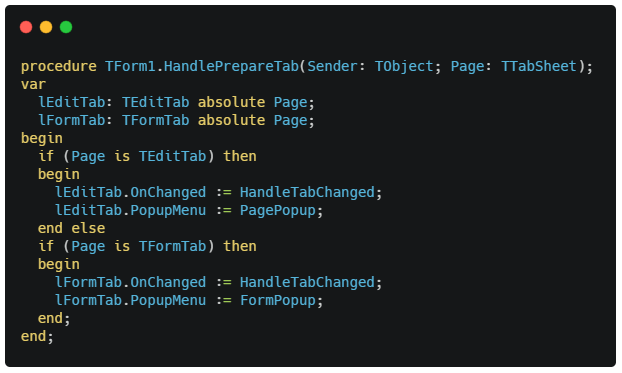
Obviously this is not a live example, its written like this purely to make a point. Namely that the Page parameter can be accessed as a different type without allocating variables or typecasts. Im sure there are some memory use, but i find the above more elegant than 3 x nested if/then/else before you can even touch the pointer.
While this is just a small, miniscule -bordering on pseudo example, the use of absolute can help speed up intensive code by omitting typecasts. Perhaps not above, but in other, more intensive routines dealing with graphics.
It is actually a tremendous help when dealing with low level data conversion (like dealing with 8, 15, 16, 24 and 32 bpp data. When you call routines thousands of times, every bit helps – and absolute is one of those keywords that saves a few cycles per use.
Absolute is definitely one of Delphi’s un-sung heroes. But it’s a scalpel, not a chainsaw!
Vector Containers For Delphi and FPC
Edit: Version 1.0.1 has been released, with a ton of powerful features. Read about it here and grab your fork: https://jonlennartaasenden.wordpress.com/2020/04/13/qtx-framework-for-delphi-and-fpc-is-available-on-bitbucket/
If you have been looking at C++ and envied them their std::vector classes, wanting the same for Delphi or being able to access untyped memory using a typed-view (basically turning a buffer into an array of <T>) then I have some good news for you!
Vector containers, unified storage model and typed views are just some of the highlights of my vector-library. I did an article on the subject at the Embarcadero community website, so head over and read up on how you can enjoy these features in your Delphi application!
I also added FreePascal support, so that the library can be used with TMS Web Framework.

Head over to the Embarcadero Community website to read the full article
Hydra, what’s the big deal anyway?
RemObjects Hydra is a product I have used for years in concert with Delphi, and like most developers that come into contact with RemObjects products – once the full scope of the components hit you, you never want to go back to not using Hydra in your applications.
Note: It’s easy to dismiss Hydra as a “Delphi product”, but Hydra for .Net and Java does the exact same thing, namely let you mix and match modules from different languages in your programs. So if you are a C# developer looking for ways to incorporate Java, Delphi, Elements or Freepascal components in your application, then keep reading.
But let’s start with what Hydra can do for Delphi developers.
What is Hydra anyways?
Hydra is a component package for Delphi, Freepascal, .Net and Java that takes plugins to a whole new level. Now bear with me for a second, because these plugins is in a completely different league from anything you have used in the past.
In short, Hydra allows you to wrap code and components from other languages, and use them from Delphi or Lazarus. There are thousands of really amazing components for the .Net and Java platforms, and Hydra allows you compile those into modules (or “plugins” if you prefer that); modules that can then be used in your applications like they were native components.
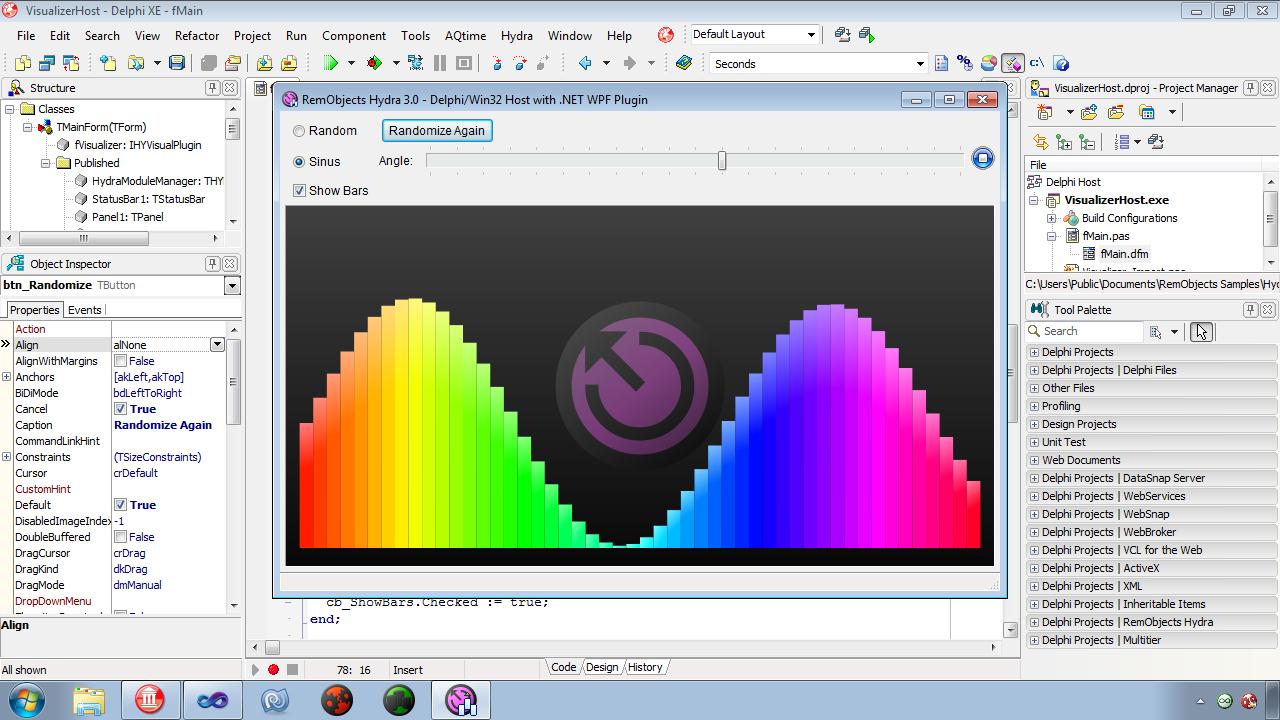
Hydra, here using a C# component in a Delphi application
But it doesn’t stop there; you can also mix VCL and FMX modules in the same application. This is extremely powerful since it offers a clear path to modernizing your codebase gradually rather than doing a time consuming and costly re-write.
So if you want to move your aging VCL codebase to Firemonkey, but the cost of having to re-write all your forms and business logic for FMX would break your budget -that’s where Hydra gives you a second option: namely that you can continue to use your VCL code from FMX and refactor the application in your own tempo and with minimal financial impact.
The best of all worlds
Not long ago RemObjects added support for Lazarus (Freepascal) to the mix, which once again opens a whole new ecosystem that Delphi, C# and Java developers can benefit from. Delphi has a lot of really cool components, but Lazarus have components that are not always available for Delphi. There are some really good developers in the Freepascal community, and you will find hundreds of components and classes (if not thousands) that are open-source; For example, Lazarus has a branch of Synedit that is much more evolved and polished than the fork available for Delphi. And with Hydra you can compile that into a module / plugin and use it in your Delphi applications.
This is also true for Java and C# developers. Some of the components available for native languages might not have similar functionality in the .Net world, and by using Hydra you can tap into the wealth that native languages have to offer.
As a Delphi or Freepascal developer, perhaps you have seen some of the fancy grids C# and Java coders enjoy? Developer Express have some of the coolest components available for any platform, but their focus is more on .Net these days than Delphi. They do maintain the control packages they have, but compared to the amount of development done for C# their Delphi offerings are abysmal. So with Hydra you can tap into the .Net side of things and use the latest components and libraries in your Delphi applications.
Financial savings
One of coolest features of Hydra, is that you can use it across Delphi versions. This has helped me leverage the price-tag of updating to the latest Delphi.
It’s easy to forget that whenever you update Delphi, you also need to update the components you have bought. This was one of the reasons I was reluctant to upgrade my Delphi license until Embarcadero released Delphi 10.2. Because I had thousands of dollars invested in components – and updating all my licenses would cost a small fortune.
So to get around this, I put the components into a Hydra module and compiled that using my older Delphi. And then i simply used those modules from my new Delphi installation. This way I was able to cut cost by thousands of dollars and enjoy the latest Delphi.
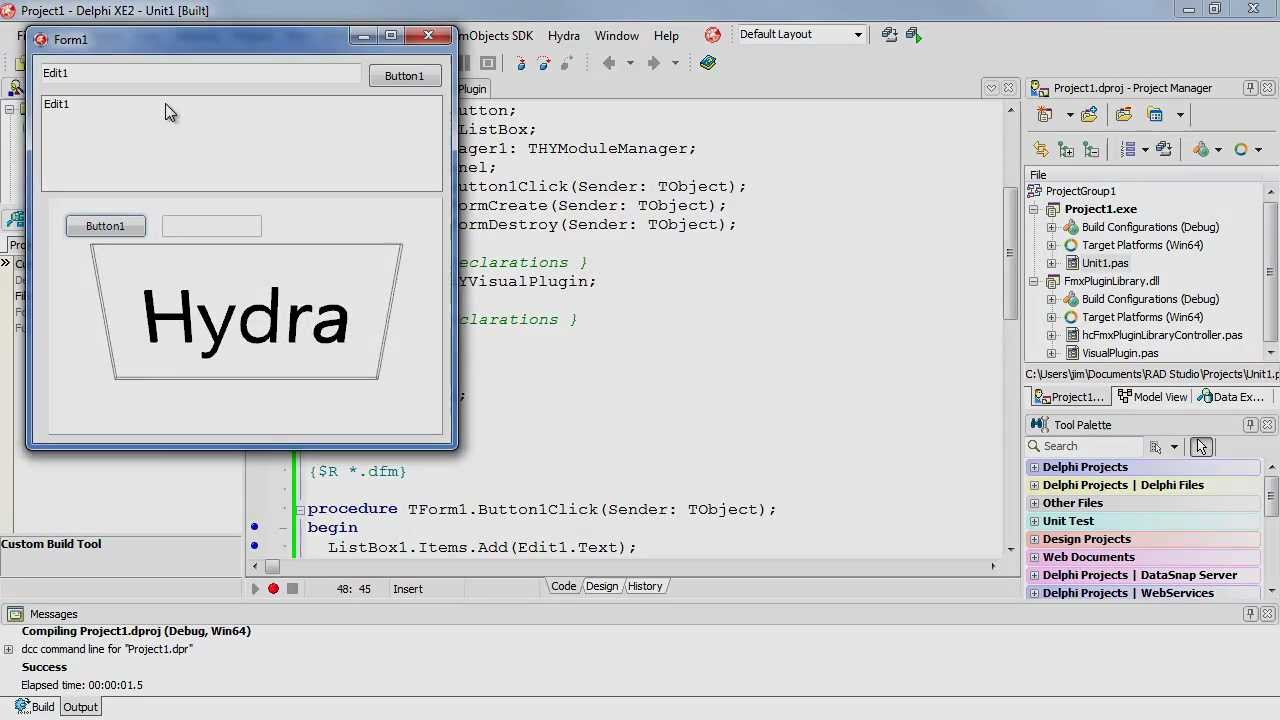
Using Firemonkey controls under VCL is easy with Hydra
A couple of years back I also took the time to wrap a ton of older components that work fine but are no longer maintained or sold. I used an older version of Delphi to get these components into a Hydra module – and I can now use those with Delphi 10.3 (!). In my case there was a component-set for working closely with Active Directory that I have used in a customer’s project (and much faster than having to go the route via SQL). The company that made these don’t exist any more, and I have no source-code for the components.
The only way I could have used these without Hydra, would be to compile them into a .dll file and painstakingly export every single method (or use COM+ to cross the 32-bit / 64-bit barrier), which would have taken me a week since we are talking a large body of quality code. With Hydra i was able to wrap the whole thing in less than an hour.
I’m not advocating that people stop updating their components. But I am very thankful for the opportunity to delay having to update my entire component stack just to enjoy a modern version of Delphi.
Hydra gives me that opportunity, which means I can upgrade when my wallet allows it.
Building better applications
There is also another side to Hydra, namely that it allows you to design applications in a modular way. If you have the luxury of starting a brand new project and use Hydra from day one, you can isolate each part of your application as a module. Avoiding the trap of monolithic applications.
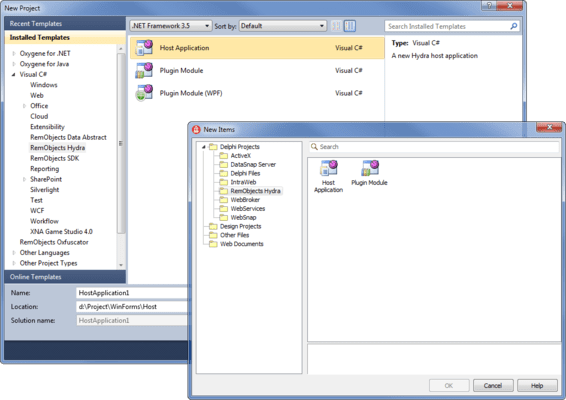
Hydra for .Net allows you to use Delphi, Java and FPC modules under C#
This way of working has great impact on how you maintain your software, and consequently how you issue hotfixes and updates. If you have isolated each key part of your application as separate modules, you don’t need to ship a full build every time.
This also safeguards you from having all your eggs in one basket. If you have isolated each form (for example) as separate modules, there is nothing stopping you from rewriting some of these forms in another language – or cross the VCL and FMX barrier. You have to admit that being able to use the latest components from Developer Express is pretty cool. There is not a shadow of a doubt that Developer-Express makes the best damn components around for any platform. There are many grids for Delphi, but they cant hold a candle to the latest and greatest from Developer Express.
Why can’t I just use packages?
If you are thinking “hey, this sounds exactly like packages, why should I buy Hydra when packages does the exact same thing?“. Actually that’s not how packages work for Delphi.
Delphi packages are cool, but they are also severely limited. One of the reasons you have to update your components whenever you buy a newer version of Delphi, is because packages are not backwards compatible.
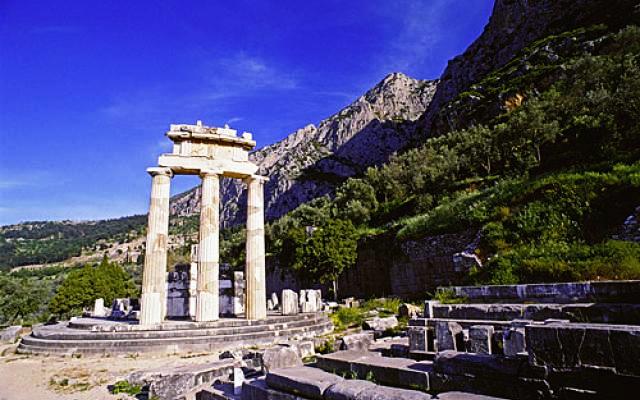
Delphi packages are great, but severely limited
A Delphi package must be compiled with the same RTL as the host (your program), and version information and RTTI must match. This is because packages use the same RTL and more importantly, the same memory manager.
Hydra modules are not packages. They are clean and lean library files (*.dll files) that includes whatever RTL you compiled them with. In other words, you can safely load a Hydra module compiled with Delphi 7, into a Delphi 10.3 application without having to re-compile.
Once you start to work with Hydra, you gradually build up modules of functionality that you can recycle in the future. In many ways Hydra is a whole new take on components and RAD. This is how Delphi packages and libraries should have been.
Without saying anything bad about Delphi, because Delphi is a system that I love very much; but having to update your entire component stack just to use the latest Delphi, is sadly one of the factors that have led developers to abandon the platform. If you have USD 10.000 in dependencies, having to pay that as well as buying Delphi can be difficult to justify; especially when comparing with other languages and ecosystems.
For me, Hydra has been a tremendous boon for Delphi. It has allowed me to keep current with Delphi and all it’s many new features, without losing the money I have already invested in components packages.
If you are looking for something to bring your product to the next level, then I urge you to spend a few hours with Hydra. The documentation is exceptional, the features and benefits are outstanding — and you will wonder how you ever managed to work without them.
External resources
Disclaimer: I am not a salesman by any stretch of the imagination. I realize that promoting a product made by the company you work for might come across as a sales pitch; but that’s just it: I started to work for RemObjects for a reason. And that reason is that I have used their products since they came on the market. I have worked with these components long before I started working at RemObjects.
.NetRocks, you made my day!
 A popular website for .Net developers is called dot-net-rocks. This is an interesting site that has been going for a while now; well worth the visit if you do work with the .Net framework via RemObjects Elements, VS or Mono.
A popular website for .Net developers is called dot-net-rocks. This is an interesting site that has been going for a while now; well worth the visit if you do work with the .Net framework via RemObjects Elements, VS or Mono.
Now it turns out that the guys over at dot–net-rocks just did an episode on their podcast where they open by labeling me as a “raving lunatic” (I clearly have my moments); which I find absolutely hilarious, but not for the same reasons as them.
Long story short: They are doing a podcast on how to migrate legacy Delphi applications to C#, and in that context they somehow tracked down an article I posted way back in 2016, which was meant as a satire piece. Now don’t get me wrong, there are serious points in the article, like how the .Net framework was modeled on the Delphi VCL, and how the concepts around CLR and JIT were researched at Borland; but the tone of the whole thing, the “larger than life” claims etc. was meant to demonstrate just how some .Net developers behave when faced with alternative eco-systems. Having managed some 16+ usergroups for Delphi, C#, JavaScript (a total of six languages) on Facebook for close to 15 years, as well as working for Embarcadero that makes Delphi -I speak from experience.
It might be news to these guys that large companies around Europe is still using Delphi, modern Delphi, and that Object Pascal as a language scores well on the Tiobi index of popular programming languages. And no amount of echo-chamber mentality is going to change that fact. Heck, as late as 2018 and The Walt Disney Company wanted to replace C# with Delphi, because it turns out that bytecodes and embedded tech is not the best combination (cpu spikes when the GC kicks in, no real-time interrupt handling possible, GPIO delays, the list goes on).
I mean, the post i made back in 2016 is such obvious, low-hanging fruit for a show their size to pound on. You have this massive show that takes on a single, albeit ranting (and probably a bit of a lunatic if I don’t get my coffee) coder’s post. Underlying in the process how little they know about the object pascal community at large. They just demonstrated my point in bold, italic and underline 😀
Look before you shoot
DotNetRocks is either oblivious that Delphi still have millions of users around the world, or that Pascal is in fact available for .Net (which is a bit worrying since .Net is supposed to be their game). The alternative is that the facts I listed hit a little too close to home. I’ll leave it up to the reader to decide. Microsoft has lost at least 10 Universities around Europe to Delphi in 2018 that I know of, two of them Norwegian where I was personally involved in the license sales. While only speculation, I do find the timing for their podcast and focus on me in particular to be, “curious”.
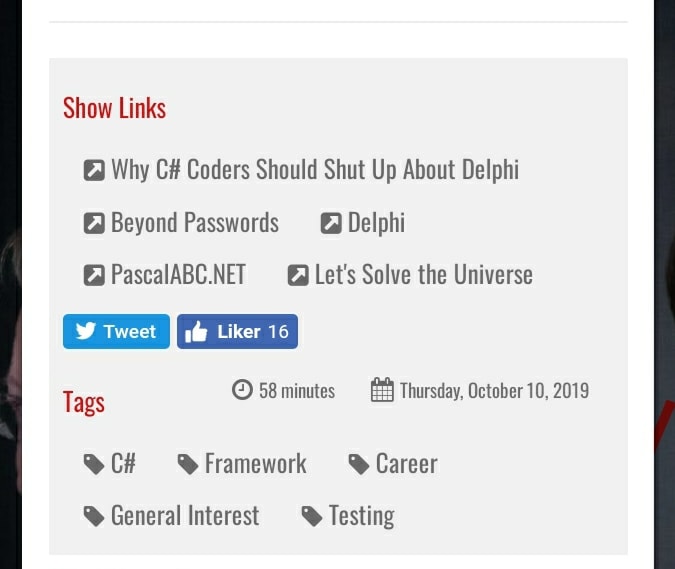 And for the record, the most obvious solution when faced with “that legacy Delphi project”, is to just go and buy a modern version of Delphi. DotNetRocks delivered a perfect example of that very arrogance my 2016 post was designed to convey; namely that “brogrammers” often act like Delphi 7 was the last Delphi. They also resorted to lies to sell their points: I never said that Anders was dogged for creating Delphi. Quite the opposite. I simply underlined that by ridiculing Delphi in one hand, and praising it’s author with the other – you are indirectly (and paradoxically) invalidating half his career. Anders is an awesome developer, but why exclude how he evolved his skills? Ofcourse Ander’s products will have his architectural signature on them.
And for the record, the most obvious solution when faced with “that legacy Delphi project”, is to just go and buy a modern version of Delphi. DotNetRocks delivered a perfect example of that very arrogance my 2016 post was designed to convey; namely that “brogrammers” often act like Delphi 7 was the last Delphi. They also resorted to lies to sell their points: I never said that Anders was dogged for creating Delphi. Quite the opposite. I simply underlined that by ridiculing Delphi in one hand, and praising it’s author with the other – you are indirectly (and paradoxically) invalidating half his career. Anders is an awesome developer, but why exclude how he evolved his skills? Ofcourse Ander’s products will have his architectural signature on them.
Not once did they mention Embarcadero or the fact that Delphi has been aggressively developed since Borland kicked the bucket. Probably hoping that undermining the messenger will somehow invalidate the message.
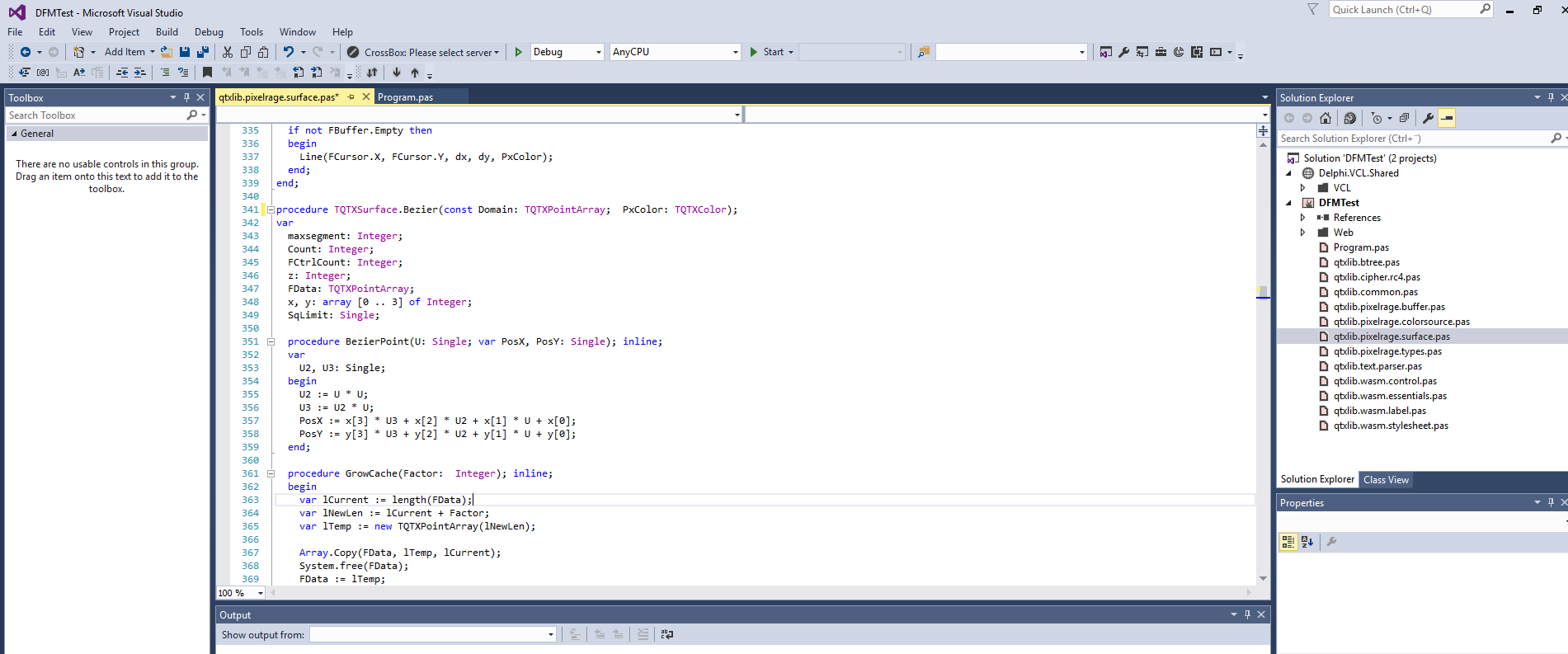
Porting Delphi to C# manually? Ok.. why not install Elements and just compile it into an assembly? You don’t even have to leave Visual Studio
Also, such an odd podcast for professional developers to run with. I mean, who the hell converts a Delphi project to C# manually? It’s like listening to a graphics artist that dont know that Photoshop and Illustrator are the de-facto tools to use. How is that even possible? A website dedicated to .Net, yet with no insight into the languages that run on the CLR? Wow.
If you want to port something from Delphi to .Net, you don’t sit down and manually convert stuff. You use proper tools like Elements from RemObjects; This gives you Object-Pascal for .Net (so a lot of code will compile just fine with only minor changes). Elements also ships with source-conversion tools, so once you have it running under Oxygene Pascal (the dialect is called Oxygene) you either just use the assemblies — or convert the Pascal code to C# through a tool called an Oxidizer.
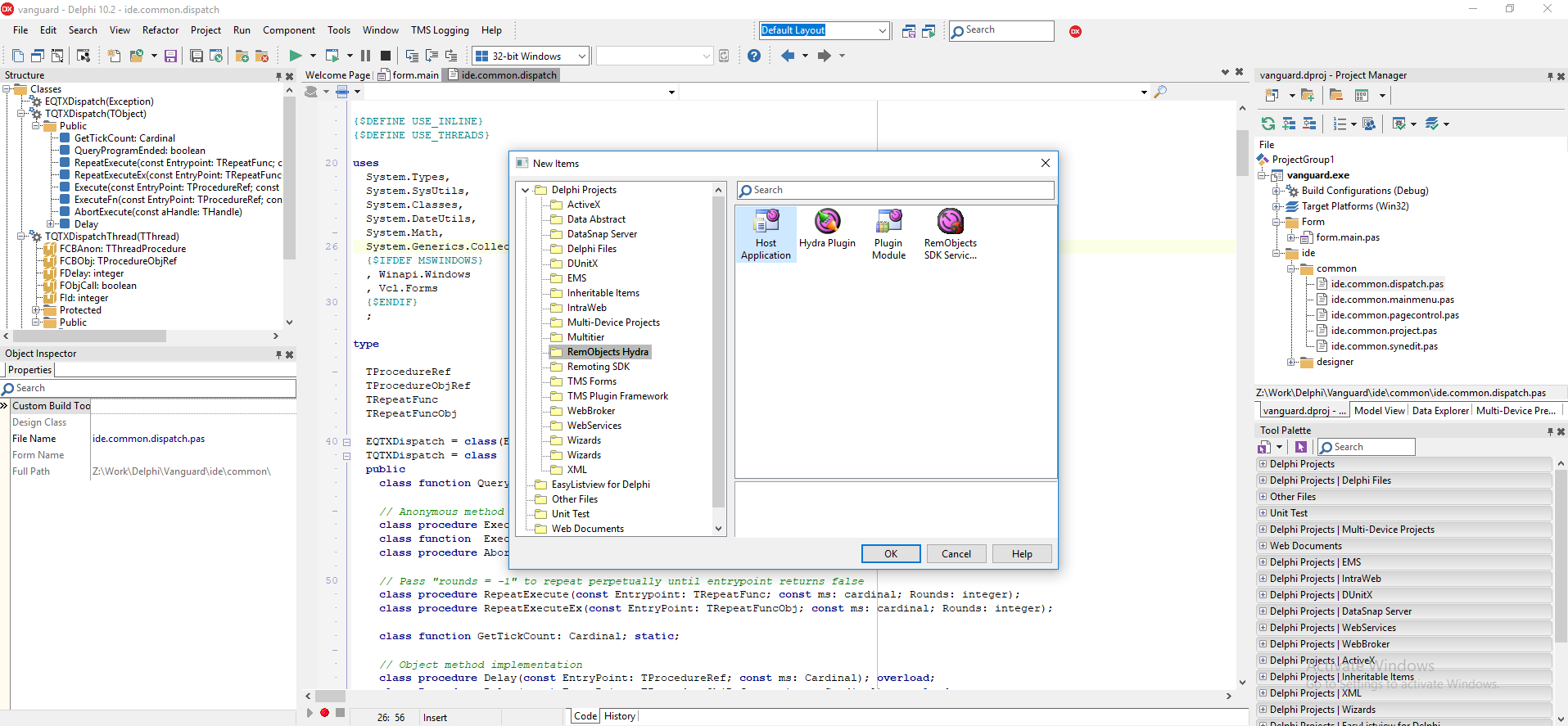
The most obvious solution is to just upgrade to a Delphi version from this century
The other solution is to use Hydra, also a RemObjects product. They can then compile the Delphi code into a library (including visual parts like forms and frames), and simply use that as any other assembly from within C#. This allows you to gradually phase out older parts without breaking the product. You can also use C# assemblies from Delphi with Hydra.
So by all means, call me what you like. You have only proved my point so far. You clearly have zero insight into the predominant Object-Pascal eco-systems, you clearly don’t know the tools developers use to interop between arcetypical and contextual languages — and instead of fact checking some of the points I made, dry humor notwithstanding, you just reacted like brogrammers do.
Well, It’s been weeks since I laughed this hard 😀 You really need to check before you pick someone to verbally abuse on the first date, because you might just bite yourself in the arse here he he
Cheers














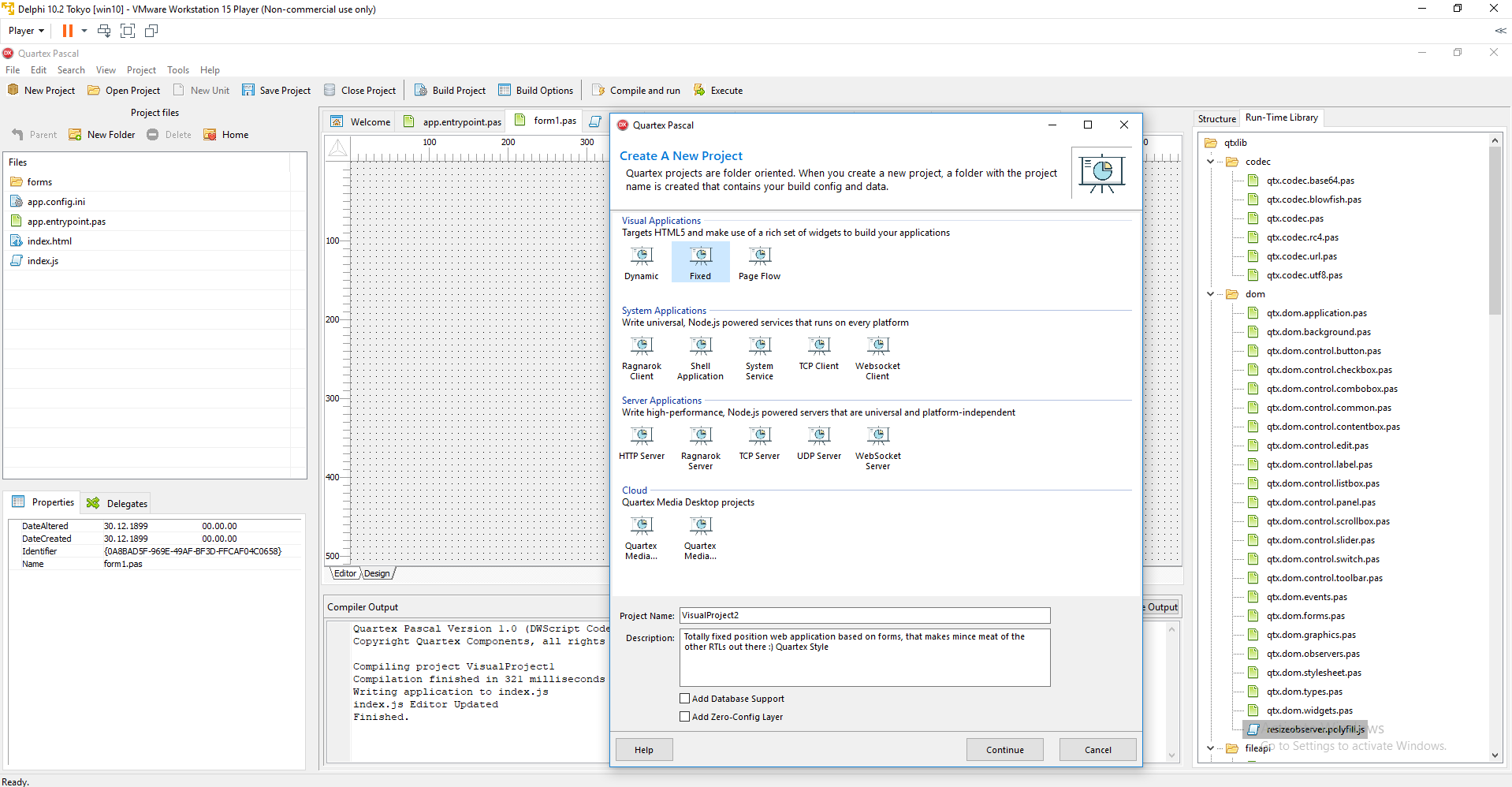







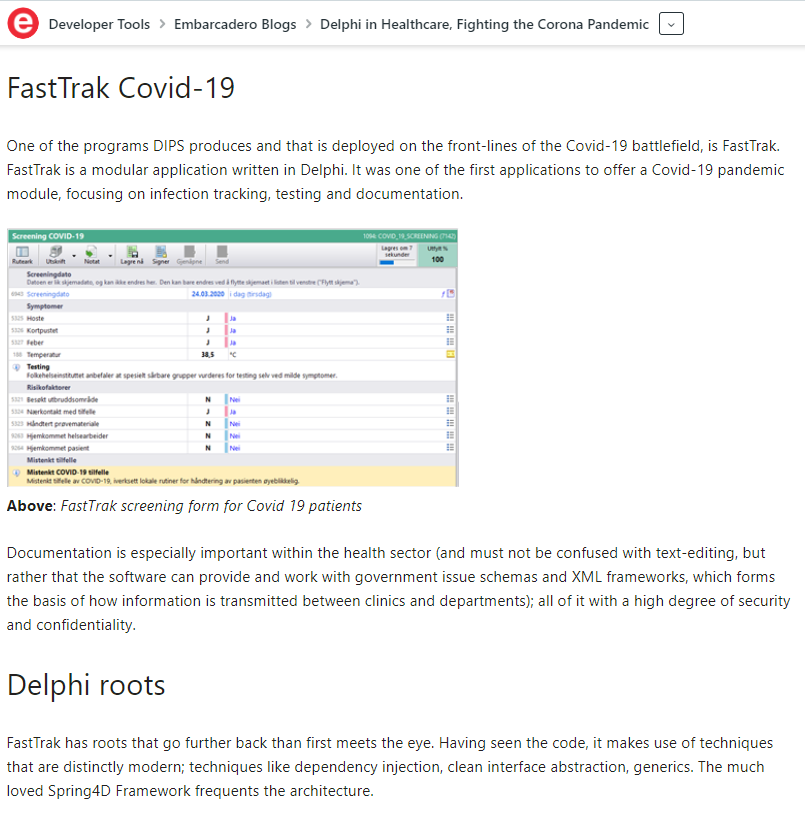

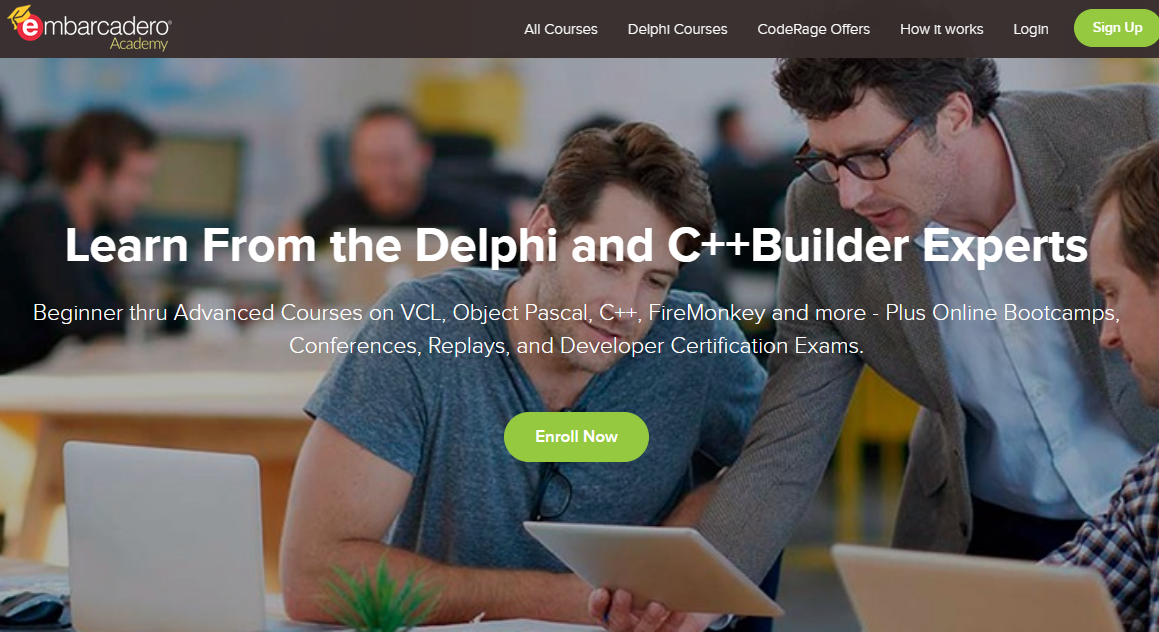

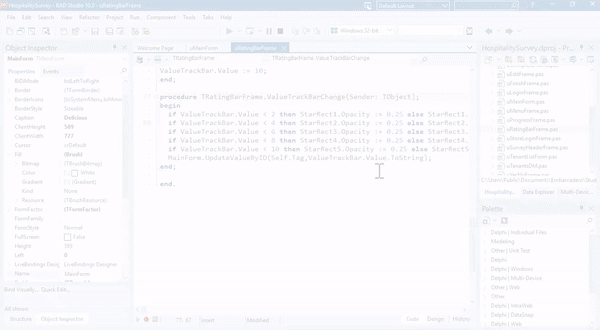

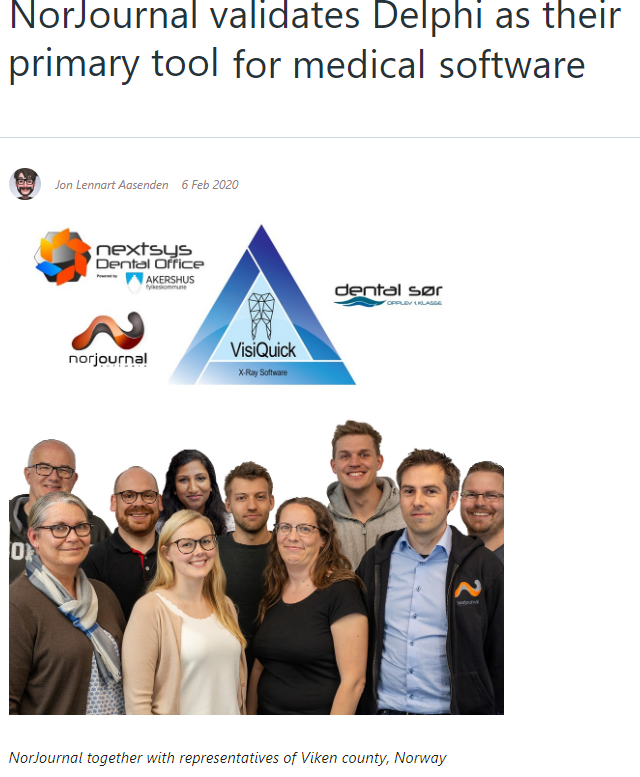

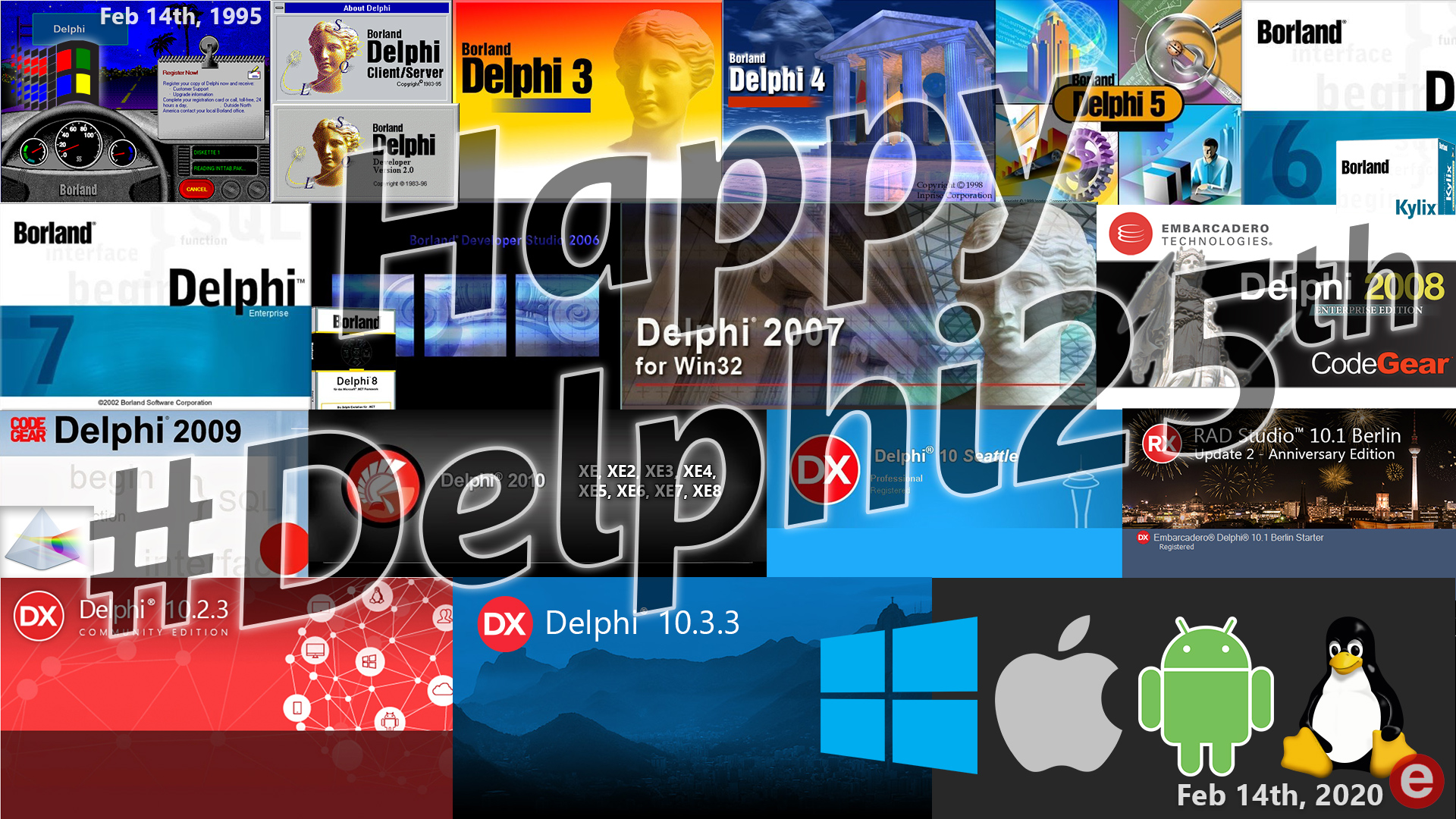 Delphi is turning 25 and in connection with that, Jim Mckeeth is preparing a webinar! So make sure you register for the webinar in time! There is some very special and unique stuff lined up, so this is going to rock!
Delphi is turning 25 and in connection with that, Jim Mckeeth is preparing a webinar! So make sure you register for the webinar in time! There is some very special and unique stuff lined up, so this is going to rock!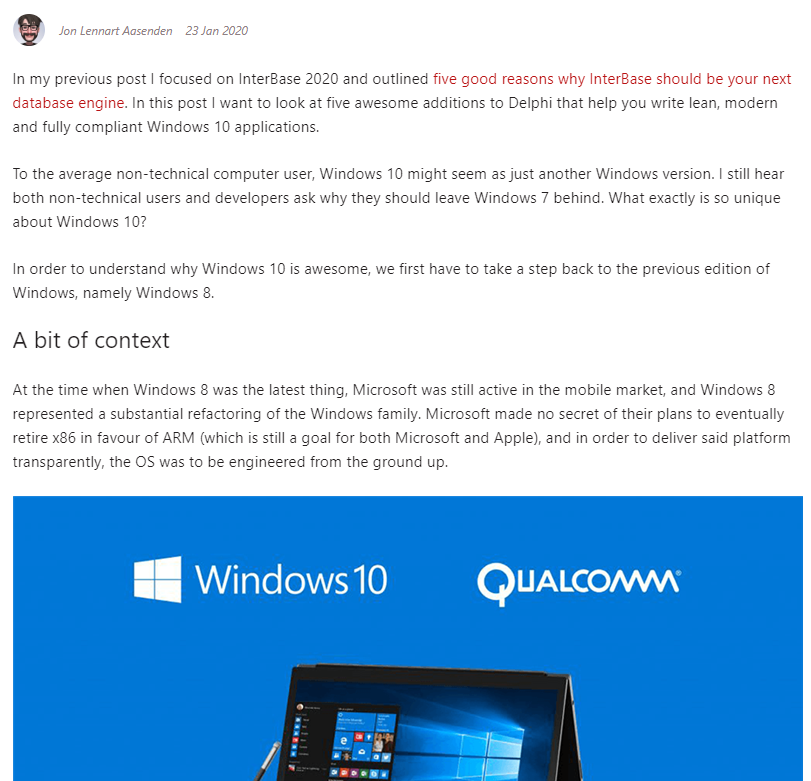

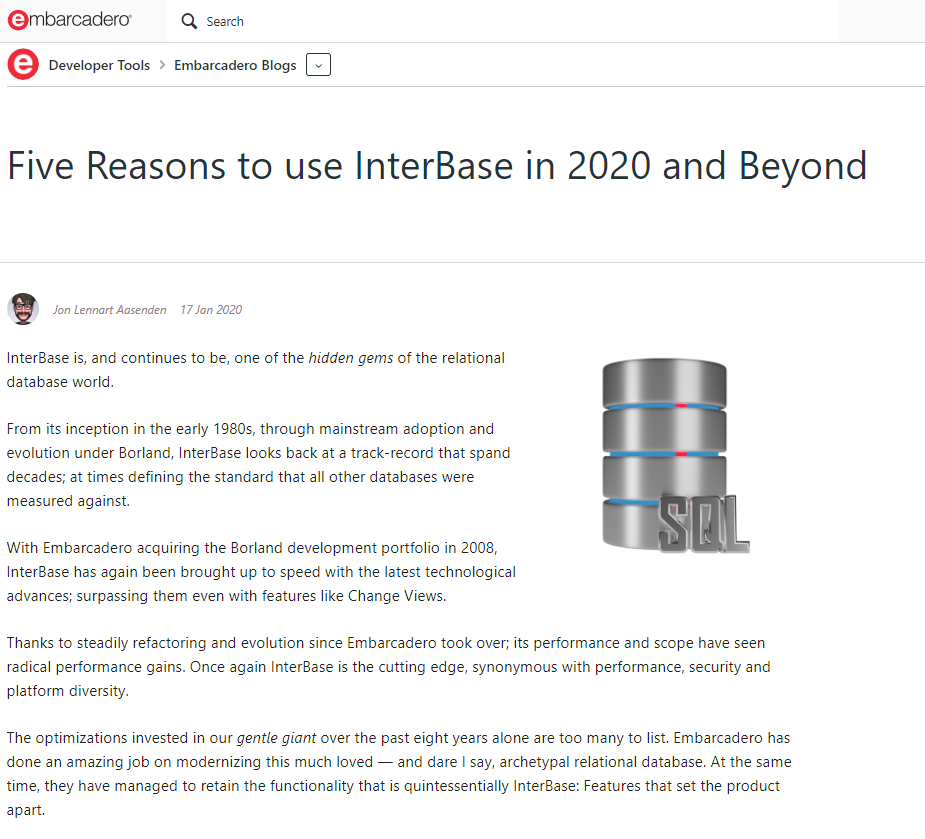





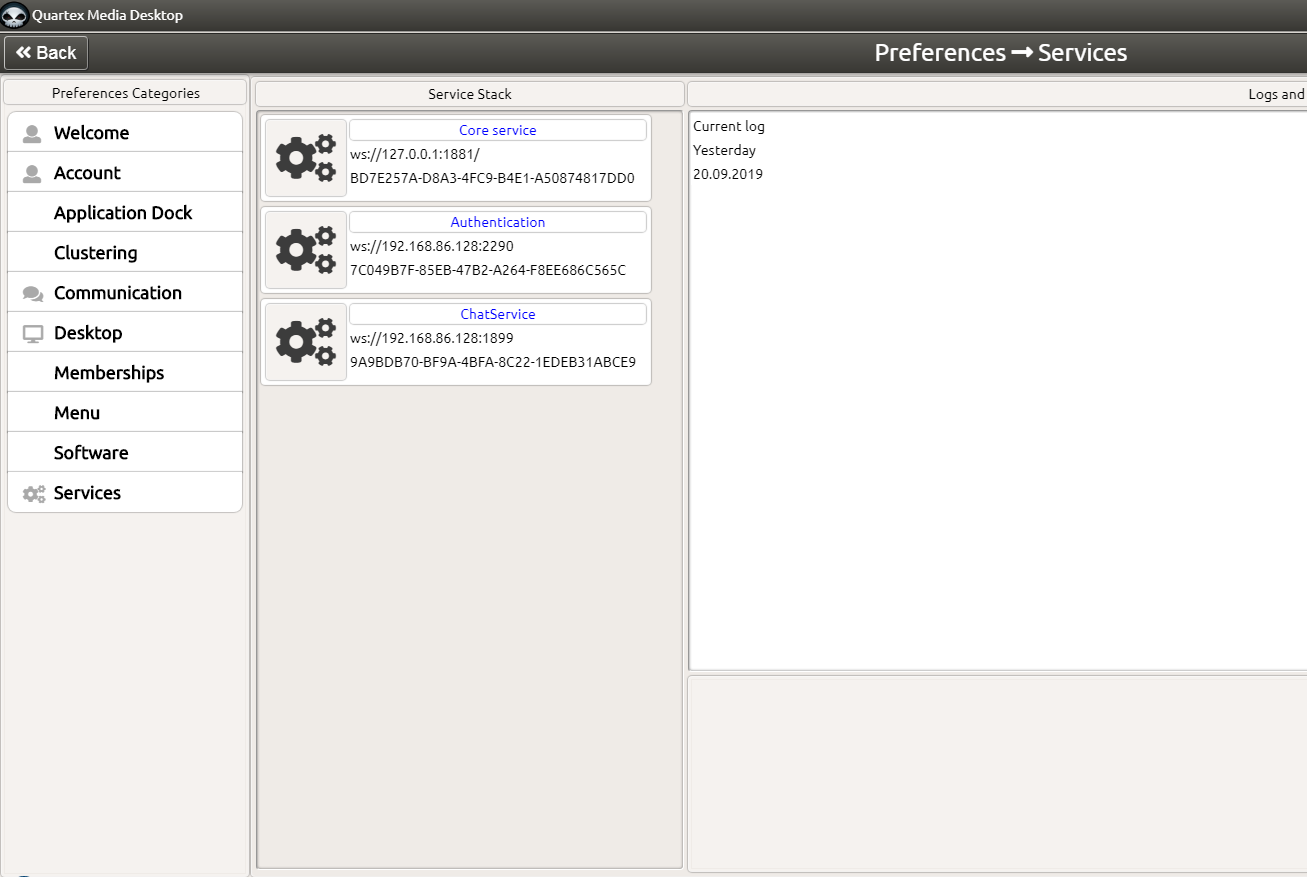

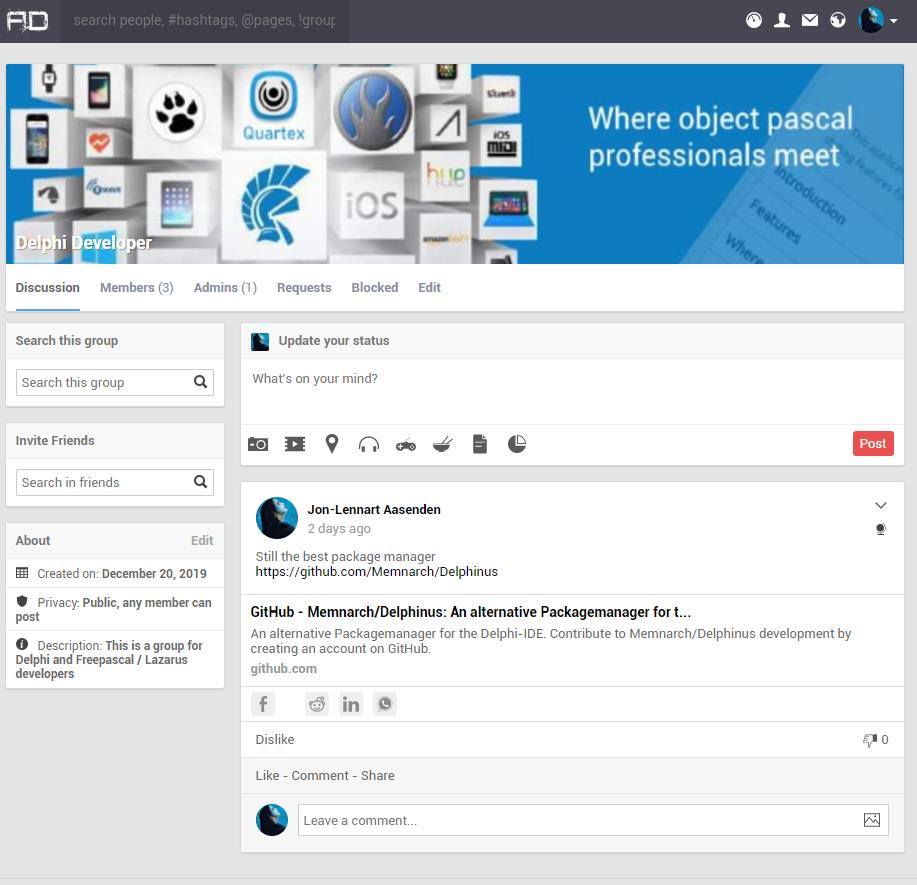


You must be logged in to post a comment.